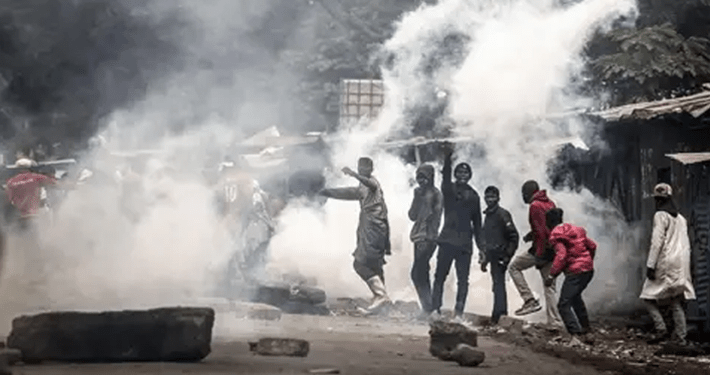At least 10 people were killed and 29 injured across Kenya on Monday as protesters shut down the country in commemoration of Saba Saba Day.
To mark the 35th anniversary of Saba Saba (meaning “seven seven”)—Kenya’s historic riots on July 7, 1990, in the push for multi-party democracy—youths in their thousands marched across the country, disrupting commercial and economic activities.
Footage of heavily armed police officers flooded Kenya’s social media platforms as citizens and local media reported on the protest from different locations across the country.
In a statement on Monday, the Kenya National Human Rights Commission confirmed “10 fatalities, 29 injuries, 2 cases of abduction and 37 arrests across 17 counties” amid the Saba Saba commemoration protest.
Accusing the police of collaborating with thugs to disrupt the protests, the commission said it “noted that the police have continued to flagrantly disregard a High Court order mandating that all officers managing demonstrations be in official uniform and remain identifiable at all times.”
It added, “The Commission observed numerous hooded officers, not in uniform, traveling in unmarked vehicles while patrolling Nairobi, Kajiado and Nakuru counties.
“Additionally, the presence of criminal gangs wielding crude weapons, including whips, wooden clubs, machetes, spears, bows and arrows, was noted in Nairobi, Kiambu, Kajiado and Eldoret. In Nairobi and Eldoret, these hooded gangs were seen operating alongside police officers.”
President William Ruto, who had insisted that violent protests and anarchy cannot force him out of office, in a series of posts on X, condemned the violence as he called for peaceful protests.
“Say NO to ANARCHY!,” Mr Ruto said. “Not Funny. Not Cool. NO. Let’s Be Peaceful.”
The East African country has been rocked by a series of protests under Mr Ruto’s watch, beginning with the anti-Finance Bill protest last year.
Since the protest that claimed about 60 lives, youths have continued to hit the streets, demanding Mr Ruto’s resignation.






